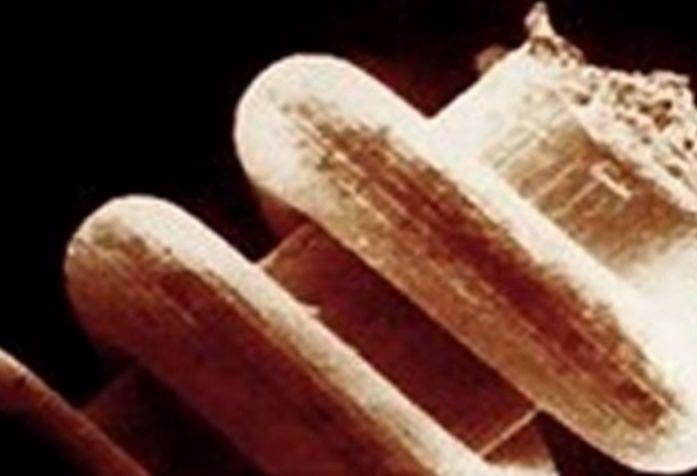A number of scientists claim to have invented the impossible—a time machine.
“Every human being leaves behind themselves a double wake: one aural and another visual, a letter of distinct identity for each individual. On the basis of this we find ourselves with conditions of returning to see and listen to the greatest people in history, reconstructing their energetic traces of light and sound.” —Father Pellegrino Ernetti
According to Einstein, as a person approaches velocities close to that of light, time slows considerably. Traveling at such a high speed for only a few moments, this individual would return to the normal world to find that hundreds of years have passed for everyone else. Like traveling into the future, such a person would have dodged several decades.
Because mankind as yet lacks the technology to test the theory, most believe that such a journey remains purely conceptual. However, some are said to have already taken a trip beyond the boundaries of time. Testing the limits of Einstein’s theories, a number of scientists claim to have invented the impossible—a time machine.
The Chronovisor: A Machine That Views the Past
What if you could look back and carefully examine key moments in history? The potential for settling present disputes with such evidence would be astounding.
In May of 1972, the Italian weekly La Domenica del Corriere published a spectacular notice: Father Pellegrino Ernetti—a Benedictine priest, quantum physicist, and electronic oscillography specialist—had constructed a device that he dubbed the chronovisor, which was capable of capturing images and sound from past events.
Ernetti said the technology was created with the help of 12 other world-famous scientists (including Enrico Fermi and Wernher von Braun), and his claim soon spread a controversy around the world. Further adding to the dispute, Father Ernetti provided “irrefutable” evidence of the existence of his apparatus: a photograph that supposedly captured the moment in which Jesus Christ was dying on the cross.
But how did it work? According to an explanation by polymath Ernetti, the luminous energy and sound that objects emanate are recorded in their environment, such that proper use of the chronovisor could reconstruct from said energy the images and sounds of a specific set of events from the past.
In addition to the photography he provided (his Christ was later found to closely resemble a carving at the Shrine of Merciful Love in Collevalenza), Ernetti declared having recorded various biblical scenes, like the destruction of Sodom and Gomorrah, and the original Law of Sinai tablets.
Despite criticism that his chronovisor was a fraud, Ernetti continued defending his special camera, arguing that the Vatican prevented him from speaking further about the invention.
Whether or not the chronovisor actually existed, interest in the device continues to this day. Two scientific teams are currently investigating the possibility of recreating a chronovisor based on the same principles that Ernetti described. Yet while Ernetti attempted to capture images from another time, a group of Soviet scientists were said to have braved a more perilous feat—physically crossing over into parallel worlds.
The Research Institute of the Parallel World
The history of the Soviet Union’s Research Institute of the Parallel World, which began with Stalin and was revived under Khrushchev, is strange indeed. Investigating realms of the unknown, this unusual project saw participating scientists executed and buildings and equipment mysteriously destroyed.
After being shut down twice, the top-secret investigation re-emerged in 1987, but news of bizarre occurrences continued. On Aug. 30, 1989, a tragedy occurred: A huge explosion blew up a research facility in the Anjou Islands. The explosion, covering 1.25 square miles, destroyed an experimental module. The module was hit by a large object, possibly an asteroid that came from a parallel world. After the catastrophe, there was no trace of the 780-ton module containing three researchers. Some say they remained trapped in an adjacent universe.
“We are dying but continue maintaining the experiment,” a researcher from the project said in his final transmission first printed in the Russian Newspaper, Pravda. “It is very dark here: we see all the objects doubling themselves...The oxygen supply will be sufficient for 43 hours, the life support system is seriously damaged. Our best regards to the families and friends!” The transmission ended abruptly.
Are the above examples merely fairy tales—stories cooked up to satisfy our innate desire of breaking free from the constraints of the present? Or is time travel technology already within our grasp, but remains a secret carefully guarded to a select few? Left with a lack of hard evidence, the answers are difficult to confirm. At the very least, perhaps these experiments in time can serve as cautionary tales.
Whether realized in secret technology used for power and control, or in dangerous research leading to disastrous consequences, these examples might reveal why time travel proves so enigmatic—it is a boundary that was never meant to be crossed.



